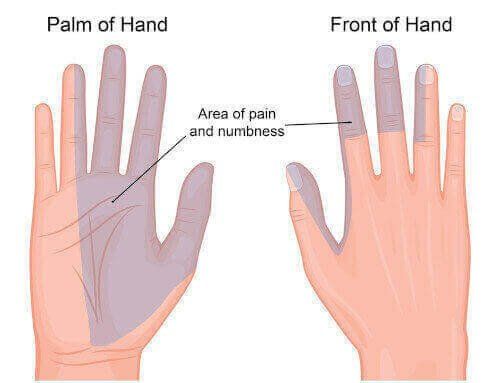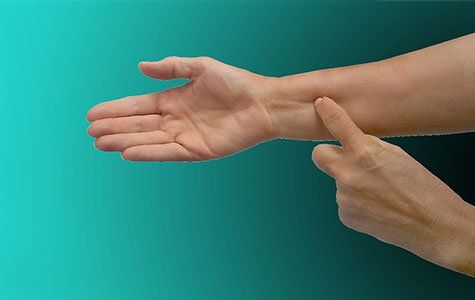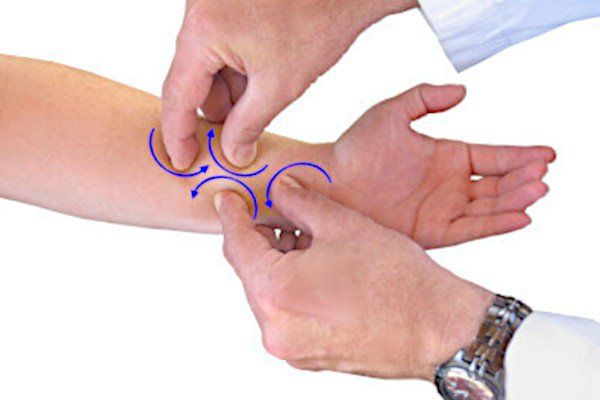How Graphic Design & Carpal Tunnel are Linked
From Dr. Z - Carpal tunnel syndrome specialist
How Graphic Design & Carpal Tunnel are Linked
Doctors have known for years that graphic design & carpal tunnel syndrome are like peanut butter and jelly. And a relatively large number of graphic designers get this condition compared to other professions.
Most graphic designers (or anybody using a computer extensively) have occasional hand or finger pain, numbness, burning, tingling or hand fatigue. That's perfectly normal when it's a result of tired and overworked hands.
But other times it can mean a chronic disorder like carpal tunnel syndrome or even wrist tendinitis. So whether you have symptoms of wrist tendinitis or carpal tunnel syndrome you must identify the problem in order to treat it properly.
- FIND OUT: do you have carpal tunnel?
No strings attached self-test.
Link between graphic design & carpal tunnel
Similarities between carpal tunnel & tendinitis
Another repetitive strain injury, wrist tendinitis is also a widespread problem with graphic designers. While not as serious as carpal tunnel syndrome, it has similar symptoms.
Like the signs of carpal tunnel, tendinitis symptoms can occur on the palm side or the back side of the hand and forearm. This is called wrist flexor tendinitis or wrist extensor tendinitis, respectively.
The following are the main differences between carpal tunnel and tendinitis:
- Usually, carpal tunnel symptoms are more widespread than tendinitis.
Carpal tunnel symptoms can affect the fingers, palm, and wrist. Tendinitis is usually confined to one area, like the fingers or forearm.
- Carpal tunnel symptoms are usually more intense than tendinitis. With
severe carpal tunnel, patients describe the pain or numbness as "crushing" or "punishing". That's usually not the case with tendinitis.
- Carpal tunnel
pain or
numbness feels worse at rest. But tendinitis generally feels worse when your hand or fingers are working. So the more your hands or fingers are active, the more severe the tendinitis symptoms.
- While not a rule,
carpal tunnel symptoms usually follow a pattern. For instance, the symptoms might be present at night or when you
wake up in the morning. In contrast, tendinitis symptoms are not as simple to describe and don’t show such a pattern.
- More advanced stages of carpal tunnel exhibit symptoms most of the time, whether your hand is resting or working.
- With carpal tunnel syndrome, your
thumb is usually much worse. However, your little finger
never
shows signs or symptoms. With tendinitis, any finger can be affected.
- Tendinitis is much easier to treat than carpal tunnel syndrome. Tendinitis usually disappears on its own with a little rest in a week or two. However, carpal tunnel syndrome requires special attention.
It's important to note that you don’t need expensive or painful exams like EMG to diagnose carpal tunnel syndrome. Studies show such tests don't help a carpal tunnel diagnosis at all.
In fact, the simple tests below are as good or better than all other tests (like EMG). Doctors use them every day to diagnose carpal tunnel or tendinitis. You can do them yourself to help determine which condition you have.
How can you tell the difference?
Carpal tunnel tests
Perform the 3 carpal tunnel exams below on yourself. If you answer
YES
to any questions, you may have carpal tunnel syndrome instead of wrist tendinitis.
Carpal Tunnel Test 1 (Phalen test - left picture above)
First, with fingers straight, flex your wrist as far as you can (bring your fingers as close to your wrist as you can). Now hold this position for 1 minute. Do symptoms appear or feel worse? Do you feel numbness? If so, it’s positive for carpal tunnel syndrome.
Carpal Tunnel Test 2 (Tinel test - middle picture above)
Now with your hand straight, firmly tap the skin over your wrist-crease several times. Does it make your fingers or hand tingle? If so, it’s positive for carpal tunnel syndrome.
Carpal Tunnel Test 3 (Durkan test - right picture above)
Finally, with your hand held straight, use your other thumb to apply firm pressure to your palm. Push on the area of the wrist crease. (It can also be between the two bumps at the base of the palm, as in the picture.) Hold pressure for 30 seconds. Does it make symptoms worse? Do you feel numbness? If so, it’s positive for carpal tunnel syndrome.
Note that some doctors use ONLY the Durkan test because it does not worsen symptoms if you don't have carpal tunnel syndrome.
Tendinitis tests
If you answered NO to the above questions, then try the following tests. If you answer YES to these tests, then you may have tendinitis.
Tendinitis Test 1
First, use one or two fingers of the other hand and tap the flexor tendons just below the wrist. The flexor tendons are the rope-like structures on the palm side (not the back side) of the hand and forearm. Also, keep the affected hand straight while tapping. Then, tap each tendon up and down the hand and forearm; and tap several times, side to side. Does any of that make symptoms worse? If so, it’s positive for wrist flexor tendinitis.
Tendinitis Test 2
This is identical to the first tendinitis test. However, it examines for extensor tendinitis. Follow the same tapping procedure on the back side of the forearm and hand. Does the tapping make symptoms worse? If so, it’s positive for wrist extensor tendinitis.
What to do next
It's certain that graphic design & carpal tunnel go together. But you don’t have to suffer. Take positive steps to treat carpal tunnel immediately, before it worsens.
As mentioned, tendinitis is much easier to treat than carpal tunnel syndrome. In fact, it will likely resolve on its own with a little rest. There also are excellent resources on the web for quickly self-treating tendonitis. Use them to keep pain and numbness from interfering with your life.
As for carpal tunnel syndrome, keep in mind that carpal tunnel surgery usually is not the answer. Rather, it’s just one of many treatment options. As a matter of fact, the American Academy of Orthopedic Surgeons strongly advises first using non-surgical remedies. Indeed, many of them are among the best remedies for carpal tunnel because they usually eliminate symptoms completely and permanently.








